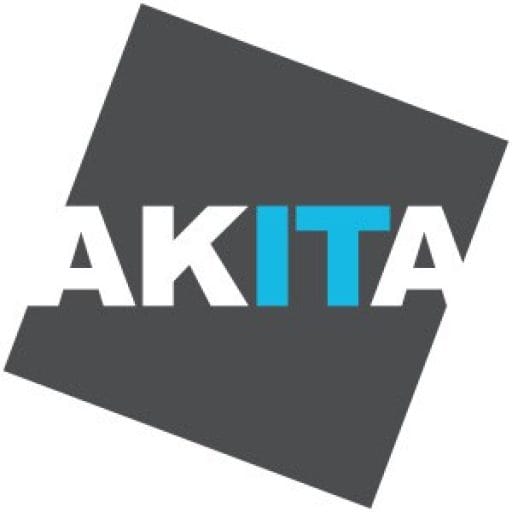As recent cyber incidents have shown, an organisation’s security is only as strong as the weakest link in its partner ecosystem. Developing a structured third-party risk program is therefore no longer a compliance exercise; it’s a strategic investment in resilience, continuity, and trust.
A well-designed third-party risk program protects against operational disruption, data breaches, and reputational harm. It supports compliance with frameworks such as NIS2 and DORA, and aligns with the National Cyber Security Centre’s guidance on supply chain security.
More importantly, it demonstrates to customers, regulators, and investors that your organisation maintains oversight and accountability across its entire network of vendors and partners.
Establishing A Foundation Of Governance
Every effective third-party risk program begins with strong governance. Responsibility for third-party oversight cannot sit solely within procurement or IT; it requires cross-departmental ownership. Creating a governance group that includes representatives from compliance, operations, finance, and security ensures that risk decisions reflect both technical and commercial priorities.
The first task is to define your organisation’s risk appetite — what levels of exposure are acceptable, and what issues must trigger escalation. Embedding these principles within a formal policy provides clarity across departments and creates a consistent framework for decision-making. Importantly, the third-party risk program should be integrated with broader enterprise risk management and business continuity planning, ensuring supplier oversight is an inherent part of the organisation’s resilience strategy.
Building Visibility Into Your Supplier Landscape
Visibility is the cornerstone of any risk management initiative. Without a clear picture of your supplier ecosystem, exposure cannot be accurately assessed. A centralised supplier inventory brings transparency to all vendor relationships, from major IT providers to niche subcontractors. This should extend beyond direct partners to include fourth-party dependencies that could impact service delivery or data integrity.
Once mapped, suppliers can be classified by the criticality of their services, the sensitivity of the data they access, and the operational impact if they fail. Assigning risk tiers helps focus your third-party risk program where it matters most. A facilities contractor might be low-risk, for example, while a cloud hosting provider handling sensitive client data would warrant continuous oversight.
Conducting Effective Due Diligence
Due diligence forms the operational heart of a third-party risk program. Before engaging a new supplier, structured risk assessments should evaluate financial stability, security posture, and compliance credentials. These reviews should be evidence-based, not tick-box exercises.
Pre-contract evaluations should confirm certifications such as ISO 27001 or Cyber Essentials, assess adherence to data protection regulations, and review the supplier’s incident response capabilities.
Technical checks should explore access management, encryption standards, and system resilience.
High-risk suppliers, such as those managing customer data or critical infrastructure, warrant deeper scrutiny through penetration test results, SOC reports, or audit findings. This ensures your organisation’s standards extend beyond internal systems to the broader ecosystem supporting them.
Continuous Monitoring And Lifecycle Management
Risk doesn’t end once a contract is signed. A mature third-party risk program emphasises continuous monitoring, tracking changes in a supplier’s cyber health, financial status, and compliance posture. Automated monitoring tools can identify vulnerabilities, reputational issues, or exposure indicators across a vendor portfolio.
Regular reassessments maintain accountability, supported by metrics such as SLA performance, incident history, and remediation timelines. This creates a dynamic picture of supplier health rather than a static annual snapshot. In high-dependency relationships, consider including vendors in continuity exercises to validate recovery procedures and communication pathways.
Strengthening Contractual Controls
Contracts define the boundaries of protection. Security, resilience, and data handling expectations should be explicitly written into supplier agreements. Key clauses should mandate timely breach notifications, set clear data protection responsibilities, and grant the right to audit or demand remediation where necessary.
Exit strategies also form an important part of contractual resilience. Stipulating data return or destruction procedures at contract end reduces residual exposure and simplifies supplier transitions. Establishing such controls from the outset ensures your third-party risk program is legally reinforced.
Integrating With Incident Response And Continuity Planning
When a supplier experiences a breach or outage, swift coordination can determine whether the impact is contained or catastrophic. Integrating supplier incidents into your existing response and recovery frameworks is therefore essential. Clear escalation paths, defined communication channels, and shared response plans ensure efficiency when time is critical.
Including critical suppliers in resilience testing fosters mutual understanding and trust. These exercises reveal gaps, validate communication routes, and demonstrate readiness to regulators and customers alike.
Reporting And Executive Oversight
Effective governance depends on insight. Regular reporting to senior leadership provides visibility into the health of the third-party ecosystem. Dashboards highlighting supplier exposure, compliance status, and emerging risks keep decision-makers informed and proactive.
Reporting also strengthens the case for investment. Demonstrating reductions in incidents, improvements in audit scores, or faster remediation times evidences that your third-party risk program is delivering measurable business value.
Embedding Risk Awareness Across Teams
An effective third-party risk program depends on people as much as processes. Training procurement, IT, and operations teams to recognise supplier risk indicators builds a culture of shared accountability. Early awareness prevents risky engagements and ensures risk reviews occur before—not after—issues arise.
Encouraging open dialogue with suppliers is equally important. Treating vendors as security partners rather than potential liabilities promotes collaboration and continuous improvement, leading to stronger, more transparent relationships.
Leveraging Technology For Scale
As supplier ecosystems expand, manual oversight becomes impractical. Governance, risk, and compliance (GRC) platforms allow organisations to scale their third-party risk program efficiently.
These systems automate assessments, scoring, and reminders while integrating with procurement and contract management tools. This reduces administrative burden, ensures consistency, and provides a central source of truth for audit and compliance purposes.
Adapting To Evolving Regulation And Best Practice
Regulatory scrutiny around third-party risk continues to intensify. Frameworks such as NIS2 and the EU’s Digital Operational Resilience Act (DORA) require evidence of continuous monitoring, incident coordination, and data security throughout the supplier lifecycle. Aligning your third-party risk program with these standards not only ensures compliance but strengthens market credibility.
By maintaining visibility, collaboration, and control, organisations can convert supplier oversight into a strategic advantage. A mature third-party risk program doesn’t just mitigate threats — it enhances operational resilience, builds trust with stakeholders, and supports sustainable growth in an increasingly interconnected world.
Developing A Third-Party Risk Program With An Expert Security Partner
Enhance your organisation’s resilience with expert guidance from Akita.
Our cyber security consultants design and implement third-party risk programs that align governance, compliance, and operational performance — ensuring your suppliers meet the same high standards you expect internally.
Whether you need to establish a full framework, audit existing processes, or align with regulations such as NIS2 or DORA, we’ll deliver a structured, outcome-driven approach that strengthens your business continuity and cyber resilience.
Speak with Akita’s governance and security specialists today to discuss how we can support your third-party risk program development:
Contact Us




